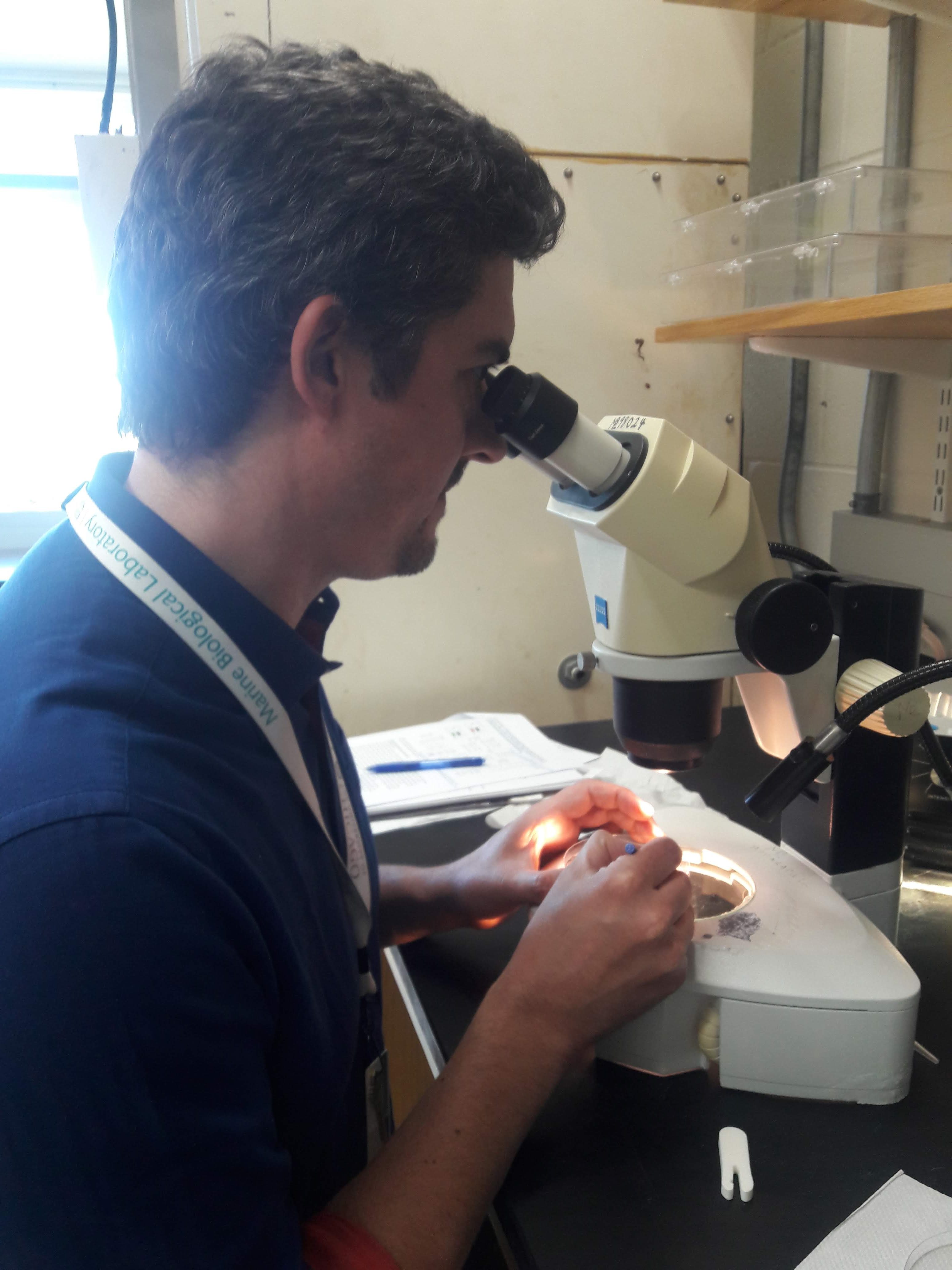Sea Squirts Spur Research: Lionel Christiaen Harnesses Ciona's Regenerative Power

Ciona, commonly called sea squirts, are squishy and semi-translucent animals that use siphons to filter food and “squirt” out waste. Their peculiar appearance hides an evolutionary proximity with vertebrates, including humans, that makes them an ideal candidate for developmental comparisons. Humans and sea squirts have a few important things in common, including essential genes for embryonic development.
Lionel Christiaen of New York University, a 2018 Whitman Center Fellow at MBL, studies these shared genes in Ciona. Besides their similarities to vertebrates, Ciona have other traits that make them ideal model organisms.
 Ciona intestinalis, a species of sea squirt used as a model organism, is grown in Christiaen's lab at New York University in addition to his lab at MBL. Credit: Lionel Christiaen
Ciona intestinalis, a species of sea squirt used as a model organism, is grown in Christiaen's lab at New York University in addition to his lab at MBL. Credit: Lionel Christiaen“Ciona, much like the roundworm C. elegans, is a good model to look at cell migration, because their early development is very simple,” says Christiaen. “There are few cells in the early embryo and they always behave in exactly the same way. This creates a very controlled system where we have high spatial and temporal resolution, and we can hope to connect the function of the genome to the behavior of the cell.”
Ciona has an even more exceptional trait: the ability to regenerate germ cells used for reproduction, such as sperm and eggs. Ciona’s regenerative abilities lie in its trunk but are triggered by amputating its tail: if it loses part of its tail, where germ cell progenitors normally reside, somatic cells (which make up most tissues) regenerate these germ cells to populate a developing gonad, which produces sperm and eggs.
Christiaen uses this special feature of Ciona to investigate a gene called Mesp, which controls the fate of the earliest cardiac progenitors (embryonic cells programmed to become cardiac tissues). Mesp functions similarly in vertebrates and sea squirts.
 Inbred sea squirts attached to petri dishes following their free-swimming larval stage. Credit: Lionel Christiaen
Inbred sea squirts attached to petri dishes following their free-swimming larval stage. Credit: Lionel ChristiaenScientists alter the Mesp gene in Ciona somatic cells using gene-editing technology, and then amputate the larva’s tail. Following this procedure, eggs and sperm regenerate from somatic cells carrying the genetic modification, which can then be passed on to the next generation (Yoshida et al., Dev Biol, 423 (2017) 111–125).
Christiaen’s lab uses what is known as a knock-in technique to replace Mesp in somatic cells with genes for either green or red fluorescent protein (GFP or RFP). FPs produce a glowing “tag” that can be tracked through microscopy. Through breeding, they hope to create Ciona offspring with one copy of the green tag, one copy of the red tag, and none of the normal Mesp gene. This design can help them observe embryonic development in the absence of Mesp and to infer its most critical roles.
 Lionel Christiaen triggers Ciona tail regeneration in his lab in MBL's Marine Resources Center. Credit: Sarah Lawhun
Lionel Christiaen triggers Ciona tail regeneration in his lab in MBL's Marine Resources Center. Credit: Sarah Lawhun“My goal in research is to get a glimpse of universal rules that transcend the specific system or organism that we study,” says Christiaen. “The most significant question that we’re trying to answer is how the genotype, the genetic information, encodes the cell’s appearance and behavior. In many cases, we don’t yet understand the exact mechanisms by which this occurs.”
Examining how Mesp affects cell behavior helps scientists understand diseases caused by mutations in cardiac determinants, the most well known of which is DiGeorge Syndrome. It also helps them more fully grasp the nuances of cell regulation and expression, mechanisms which biology is on the cusp of fully exploring. By exploiting the unexpected potential of sea squirts, Christiaen paves the way for other scientists to more effectively use this model organism to answer fundamental questions about the evolution and development of life.